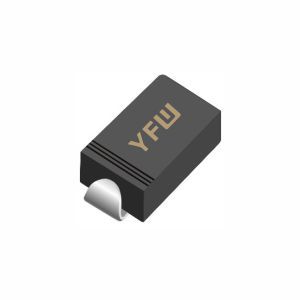Date:2025-05-09 Categories:Product knowledge Hits:428 From:Guangdong Youfeng Microelectronics Co., Ltd
1. Introduction
High-voltage diodes are semiconductor devices designed to handle significantly elevated voltage levels compared to standard diodes. They play a crucial role in numerous electronic applications, especially those involving high-voltage power supplies, microwave ovens, cathode-ray tubes, and X-ray machines. Understanding the correct usage of High-voltage diodes is essential for ensuring the safety, reliability, and optimal performance of these systems.
2. Working Principle
The fundamental working principle of High-voltage diodes is based on the unidirectional conductivity of semiconductors. They consist of a P-N junction, where the P-type and N-type semiconductors are joined together. When a forward voltage (anode positive relative to the cathode) is applied across the diode and exceeds its forward voltage drop (usually a few volts for silicon-based high-voltage diodes), the diode conducts electricity, allowing current to flow through it. Conversely, when a reverse voltage is applied, the diode blocks the current flow, acting as an insulator. High-voltage diodes are engineered to withstand extremely high reverse-bias voltages without breaking down, which is their key characteristic distinguishing them from low-voltage counterparts.
3. Applications and Usage Considerations
3.1 Power Supplies
In high-voltage power supply circuits, high-voltage diodes are commonly used for rectification, converting alternating current (AC) to direct current (DC). For example, in a half-wave rectifier circuit, a single high-voltage diode is employed to pass only the positive half-cycles of the AC input, while blocking the negative half-cycles. In a full-wave rectifier, two or four high-voltage diodes work in tandem to utilize both halves of the AC waveform, resulting in a smoother DC output.
When using High-voltage diodes in power supplies, it is vital to select diodes with a reverse voltage rating (VRRM - Peak Repetitive Reverse Voltage) that exceeds the maximum expected reverse voltage in the circuit. Additionally, the forward current rating of the diode should be sufficient to handle the load current requirements. For instance, if a power supply is designed to output 1000V DC and supply a maximum load current of 1A, the chosen High-voltage diodes should have a VRRM rating well above 1000V and a forward current rating of at least 1A, with a suitable margin for safety.

Previous: Classification, Structure, and Principle of MOSFET